 |
QUALITATIVE AND QUANTITATIVE RESULTS |
PHOTOREALISTIC DISPLAY
Setting Raytracing Parameters [00:04:02]
... Back to PHOTOREALISTIC DISPLAY main menu
... to Photorealistic Display Settings in AGi32 [00:00:36]
... to Understanding Radiosity in AGi32 [00:02:47]
... to Setting Radiosity Parameters in AGi32 [00:04:47]
... to Summary of the Radiosity Process in AGi32[00:02:47]
... to Understanding Raytracing in AGi32 [00:01:05]
... to Summary of the Raytracing Process in AGi32 [00:01:15]
... to Photorealistic Display Settings for Daylit Interiors in AGi32 [00:01:04]
Video Transcript:
- To access the RayTrace parameters, go to the Raytrace pull down menu. Select set parameters.
- The Ray Bounces value indicates the maximum number of specular bounces for each ray. The default value is 3, which is adequate for most environments. Environments with many specular or transmissive surfaces may require an increase in the number of bounces to ensure consideration of all specular bounces. Increasing the number of Ray Bounces will increase calculation time [1].
- Anti-Aliasing level is applied to the Ray Trace images. The Default value is 0, no Anti-Aliasing is applied. Anti-Aliasing minimizes the appearance of jagged edges in the Ray Trace images. I will change it to 5 [2].
- The Ray Trace All Defined Viewpoints parameter creates Ray Trace images for all defined Viewpoints within the current View. This parameter is enabled by default. When this option is disabled, current views are Ray Traced [3].
- When enabled, the RayTrace Direct Illumination from all specified light sources (Daylighting and Electric Lighting) is ray traced. Be aware, that enabling Direct Illumination, specifically with Electric Lighting sources, can be very time consuming and may increase your calculation times significantly. The Ray Trace calculation time will increase in proportion to the number of light sources. As such, you may want to limit it to final image generation (e.g. presentation images). You can switch on glossy and soft shadows for final rendering [4].
- Tone mapping looks is most noticeable when one is creating an image looking out of an interior environment say or window and viewing the exterior environment so that they may be displayed more naturally on a computer monitor which has a low dynamic display range (255:1). Tone Mapping is typically used to convert the high tones of an image into lower tones (e.g. dodge the highlights in photographic terms) value 1 to 10. Tone mapping may also be used to convert the low tones to higher ones value 0 to 1 [5].
- You can set the size of the final rendered image to same as view display size or a custom size by entering the width and height. The generated Ray Trace images are saved as Bitmap files or JPEG files. JPEG images use lossy compression to generate smaller file sizes with fairly high quality. You can specify the location here [6].
- Finally, AGi32 allows the user to specify a fractal pattern of clouds superimposed on top of the sky dome. Clouds are not taken into consideration during the calculations [7].
References





